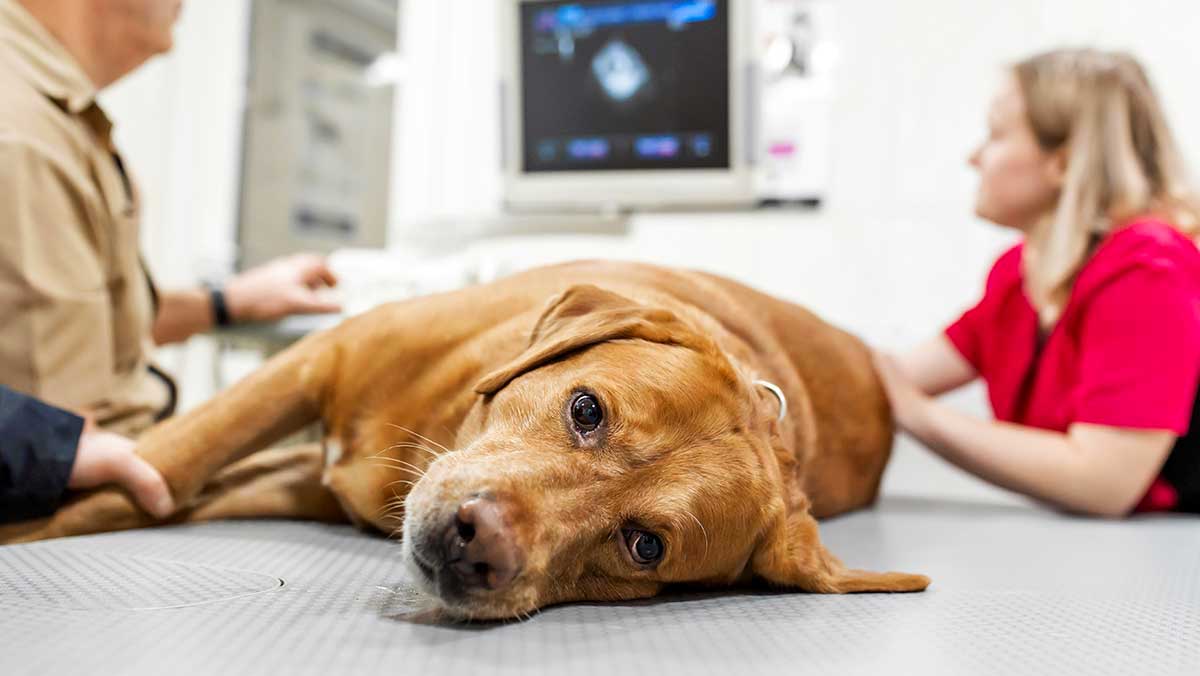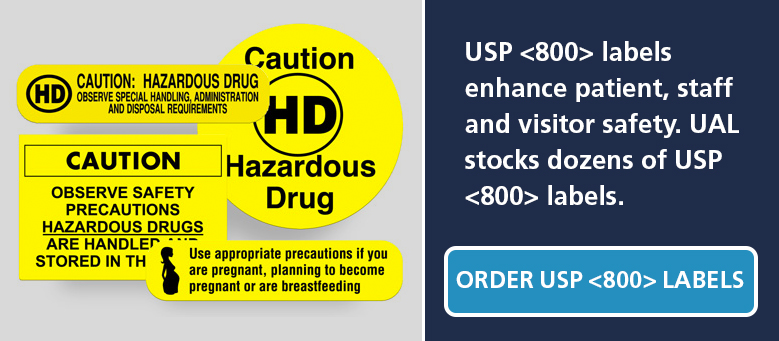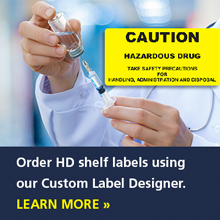Although we all want our pets to live longer, we don’t want them to get old. Happily, in the last four decades, their life span has doubled. Unfortunately, as our furry friends live longer, it also increases the possibility that they contract a serious illness. In fact, nearly half of both dogs and cats over the age of 10 develop cancer. And as author Andrea Laurent-Simpson explores in her book, Just Like Family, almost 95 percent of adults who share their homes with dogs and cats treat their animal companions as legitimate members of their families. So when a pet contracts a serious illness like cancer, just like a human, the family pulls out all the stops to ensure a return to good health. But as cancer cases increase, so does the use of the hazardous drugs in veterinary medicine to treat those patients. USP developed guidelines to help ensure the safe handling of these drugs to minimize the risk of exposure. Take these steps to manage USP <800> in your veterinary practice and ensure the safety of your staff, patients and the environment.
USP <800> vs. USP <797>
The United States Pharmacopeial Convention, typically known as USP, developed standards around medication compounding and later added to those standards with specific guidelines on managing hazardous drugs.
For example, an accredited veterinary practice may compound drugs when approved drugs need to be modified to sufficiently treat the patient. USP 797 provides standards for compounding these sterile preparations and promotes the protection of the sterility of the drug. On the other hand, USP <800> focuses specifically on hazardous drugs. It provides standards for the safe handling of HDs to minimize exposure risks and is focused on the safety of personnel who come in contact with the HDs.
What Are USP <800> Guidelines Used For?
The purpose of the USP <800> chapter is to describe practice and quality standards for handling hazardous drugs in health care settings and help promote patient safety, worker safety and environmental protection.
What classifies a drug as hazardous? The National Institute for Occupational Safety and Health (NIOSH) considers a drug to be hazardous if it damages DNA, causes cancer, contributes to infertility, harms a developing fetus, causes developmental abnormalities or causes organ damage.
How Does USP 800 Affect Veterinary Medicine?
There are nearly 300 hazardous drugs that require monitoring. NIOSH regularly reviews drugs approved by the Food and Drug Administration and publishes a list of hazardous drugs that meet the agency’s criteria. The list updated in 2022 contains those hazardous drugs which are grouped into one of two categories:
- Antineoplastics that meet one or more of the NIOSH criteria for a hazardous drug
- Non-antineoplastic drugs that primarily have adverse reproductive effects The USP guidelines are designed to limit the exposure of these drugs to veterinary workers, patients, staff, family or visitors.
Common Chemicals Used In A Veterinary Setting
Veterinary medicine and animal care workers are at risk of exposure to many different chemical hazards including glutaraldehyde and other disinfectants, hazardous drugs, latex, pesticides, and waste anesthetic gases. Exposure to these chemicals may occur if they come in contact with the skin and/or are breathed in. Further, splashes may result in chemical contact with the skin, eyes, or mucous membranes.
NIOSH defines HDs as those with the following characteristics:
- Carcinogenicity
- Teratogenicity or other developmental toxicity
- Reproductive toxicity
- Organ toxicity at low doses
- Genotoxicity
- Structure and toxicity profiles that mimic existing drugs determined hazardous by the above criteria
The highest risk for exposure occurs during the preparation of hazardous drugs.
Why Is Adherence To USP <800> Important?
Without proper safeguards, HDs can severely impact your staff. And, even though your technicians understand that drugs can be harmful, they may not realize the potential for exposure when performing routine handling activities. Exposure can cause numerous issues ranging from hair loss to kidney damage and even cancer. Implementing the safeguards detailed in USP <800> will reduce those risks.
How To Manage Hazardous Drugs In Veterinary Practices
There are numerous steps a veterinary practice should take to manage hazardous drugs properly including labeling HDs, using appropriate PPE, employing proper lighting and more.
Using Labels To Identify Hazardous Drugs
Labeling is an important component of ensuring the safe receiving, storing, dispensing and administering of hazardous drugs.
First, HDs require a designated area for the receipt, storage, dispensing and administration of all hazardous drugs, plus an area for storing contaminated waste prior to disposal. Although storing HDs in the pharmacy and treatment rooms is acceptable, segregating HD inventory from other drugs improves control and reduces the number of staff members potentially exposed to the danger. In addition, HD containers must be labeled appropriately which also alerts staff members to the potential harm these drugs can cause when not handled properly.
Further, the inventory in these storage areas must be monitored closely. Consider these steps:
- Label shelves to identify the location of hazardous drugs
- HDs placed in inventory should be protected from potential breakage by storage in bins that have high fronts and on shelves that have guards to prevent accidental falling
- To avoid mix-ups from similar-looking or sounding HD drug names, use the look-alike, sound-alike labeling procedures you use for other drug storage areas.
Lastly, when storing contaminated waste prior to disposal, the containers must be labeled, tagged, or marked with the identity of the material and appropriate hazard warnings. Warning storage labels like these guide proper storage and disposal.
What PPE Is Required By USP <800> In Veterinary Practices?
Custom Labels
Although PPE is an essential USP <800> safety element, the type required depends on the specific task and the potential risk that it creates.
For most practices,
- Chemotherapy gloves and gowns
- Goggles
- Face shields
- Respiratory protection
- Hair and shoe covers
Will help your staff maintain the appropriate level of safety.
In addition, once the PPE is used and ready for disposal, applying auxiliary labels will help guide that process.
Challenges To Proper Adherence to USP <800> Standards
On average, the staff turnover in a veterinary practice is 23%. In an employment environment where it’s not easy to fill open positions, creating more work for the current staff, training and reinforcing USP <800> policies may take a back seat.
Yet, effective onboarding and training make it more likely that employees adhere to USP <800> standards and work safely around hazardous drugs. For example, training should include detailing the dangers of each drug and how it applies to their specific job functions. Further, it’s important to demonstrate the appropriate use of PPE and define spill management procedures.
Could USP Requirements For Veterinary Practices Change?
Most veterinary facilities that take on oncology cases don’t undertake onsite sterile compounding. But if you do, adhering to those USP 797 standards adds another layer of complexity that you’ll need to follow. Unfortunately, the standards that apply to healthcare organizations can create unnecessary challenges for vets. In fact, The AVMA reported that the USP agreed to consider developing a veterinary-specific chapter and said it welcomes AVMA’s input to define appropriate standards specific for compounding for animal patients. Although USP <800> is official, the chapters covering sterile compounding are still informational so it’s possible that a further refinement of regulations will occur.
United Ad Label
United Ad label provides a full range of hazardous drug labels and safety labels designed for USP <800> applications. In addition, when your application requires a custom label, our Custom Label Designer makes it easy to design, price and order it online. Click here for more information.


